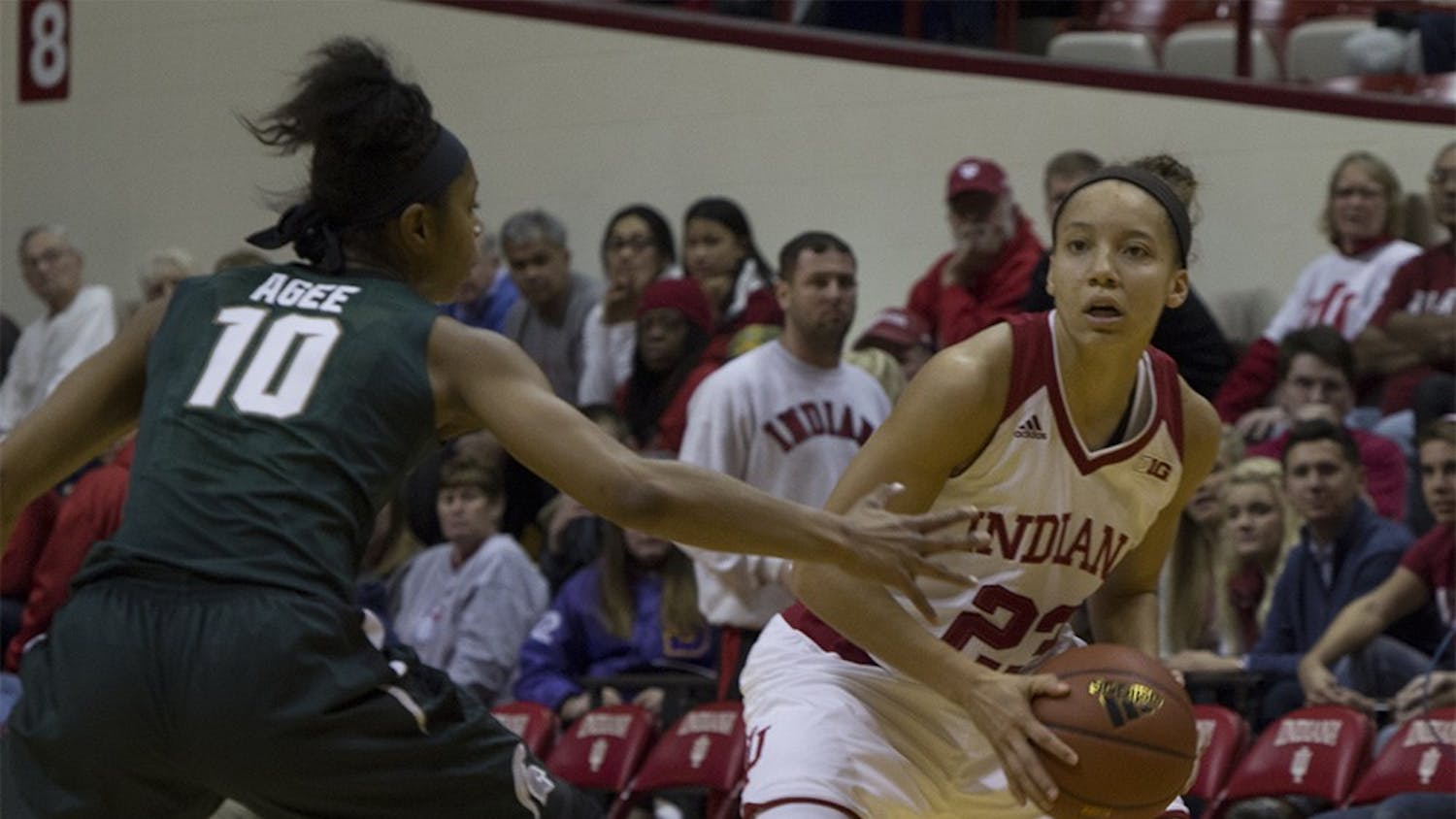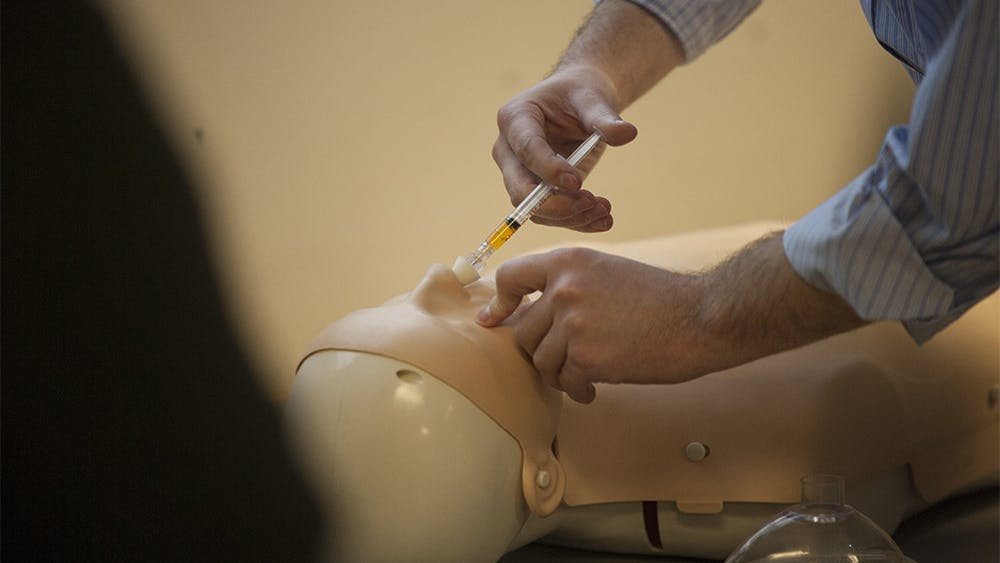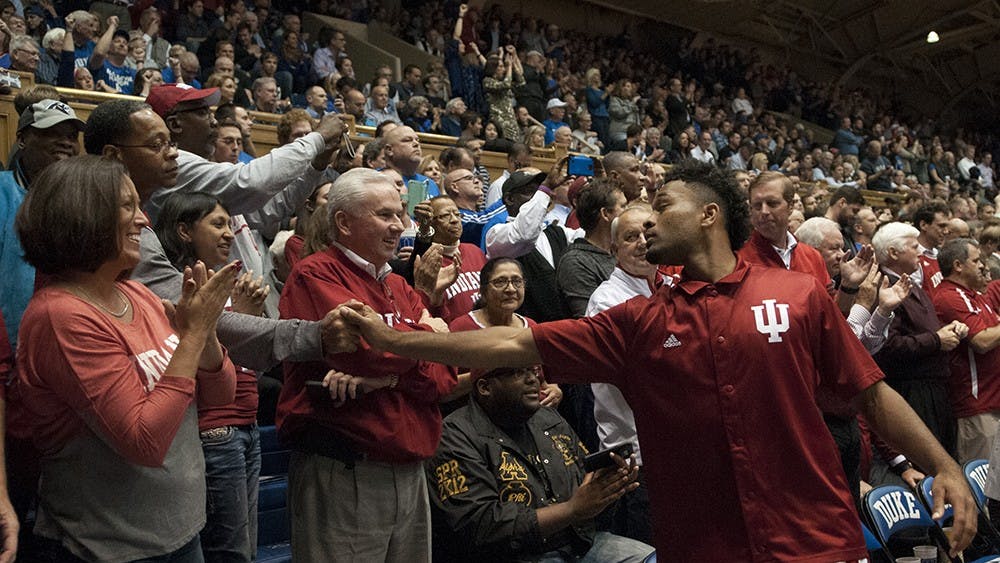There’s a group of three, then a few more join, and a few more, until gradually the small gathering turns into a giant flock. The sky is bright and colorful. Crunchy leaves are slowly falling to the ground, uncovering the looming darkness in the trees. The black-feathered bird is back for the season.
For years, crows have invaded Bloomington and other Indiana cities, such as Terre Haute and Indianapolis, during the winter months. This year is no exception as the large flocks of crows begin to settle in.
Josh Griffin, district wildlife biologist for the Indiana Department of Natural Resources, said the reason for the noticeable increase of crows could be that some don’t naturally migrate during winter, and some crows coming from farther north might stop here.
He also said there are a number of reasons why Bloomington is an attractive place for crows to live, including the availability of food, increase in light, warmer weather, fewer weapons and plenty of green spaces, such as public parks.
“There are a number of attractive things to urban areas for crows,” Griffin said.
Graduate student Gregory Kohn focuses his studies on birds and has done various research projects on crows. He said he’s seen crows especially near the tailgate fields, the cross-country course and on the south side of Bloomington.
Originally from Albany, N.Y., Kohn said he saw large numbers of crows on the East Coast, but he was surprised when he came to Indiana.
“I’ve never seen in smaller towns the sheer number of crows I’ve seen in the Midwest and Indiana,” Kohn said.
Despite the high number of crows in the area, Kohn said he thinks there is only a perceived increase.
“I wouldn’t say there are any more crows,” Kohn said. “They just form these giant congregations.”
Terre Haute created a crow committee responsible for using pyrotechnics to control the excessive crow population.
But Bloomington does not have such a committee in place, so residents handle crows on their own.
It is legal to shoot crows, according to state law, but within the city limits of Bloomington, it is illegal to shoot a firearm, regardless of the target.
But there is a legal hunting season for crows, which begins Dec. 13.
Other than shooting crows, Griffin suggested people should try to scare them away if there is a problem.
Even with large numbers of crows, Laurie Ringquist, director of Animal Control in Bloomington, said they haven’t received any complaints but would only get involved if one was sick or injured.
“Other than that, we don’t really have any responsibility,” Ringquist said.
The Bloomington Public Works Department would be responsible for cleaning up after crows but hasn’t seen any complaints this year.
On IU’s campus, Michael Girvin, Campus Division manager, said they never know where the crows are going to show up, so it’s difficult to know where to watch for clean-up.
He said typical protocol is to wash down the area with a water wagon if there’s
a mess.
Kohn said the bigger groups of crows can be seen more easily at night than during the day because the crows stay at their family roosts during the day and then congregate to the bigger roosts at night, perhaps for protection.
“It’s a weird system,” Kohn said. “It’s strange, but that’s why I’m fascinated by it.”
As winter nears, crows settle in Bloomington
Get stories like this in your inbox
Subscribe





